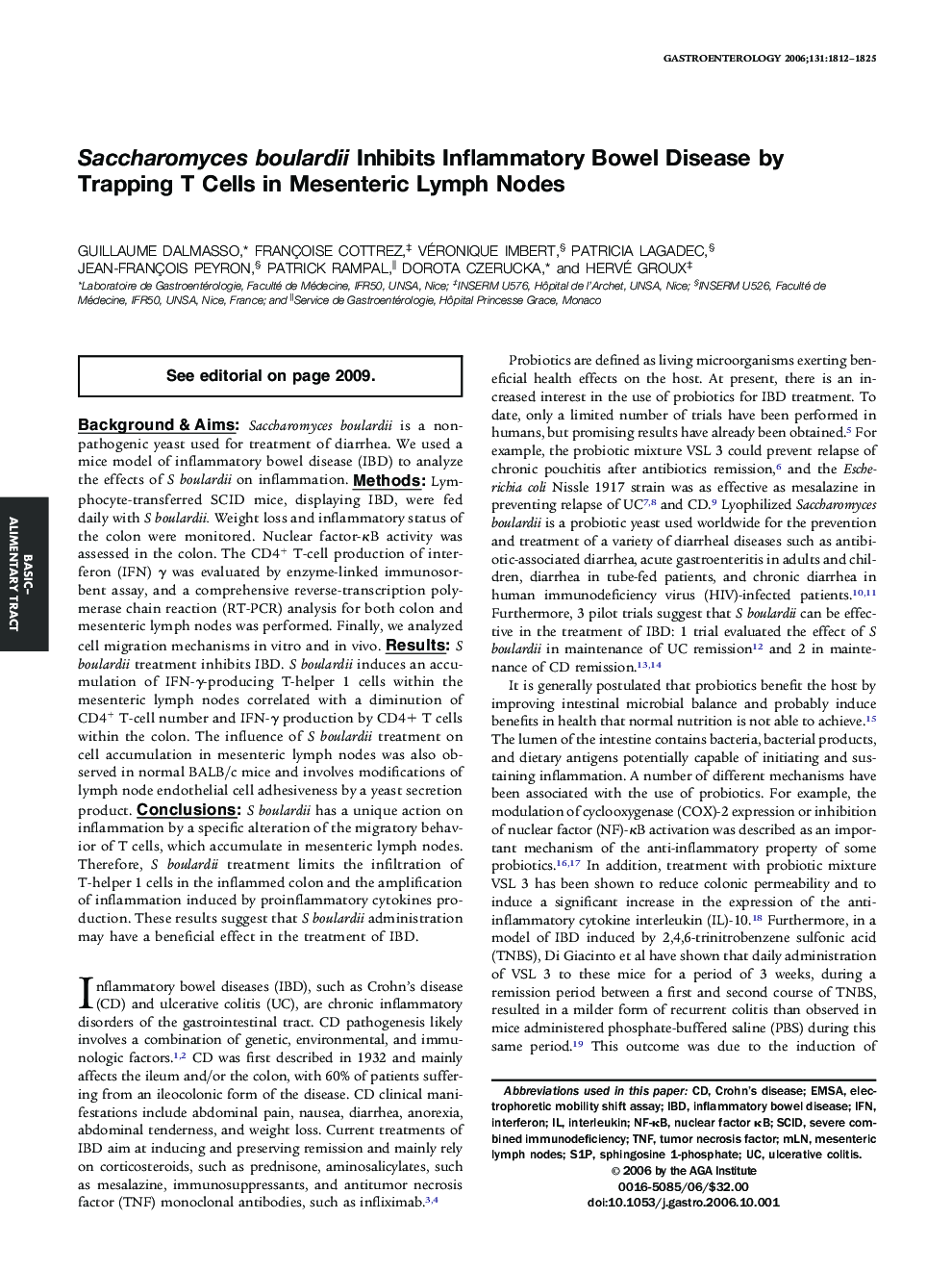| Article ID | Journal | Published Year | Pages | File Type |
|---|---|---|---|---|
| 3299619 | Gastroenterology | 2006 | 14 Pages |
Background & Aims:Saccharomyces boulardii is a nonpathogenic yeast used for treatment of diarrhea. We used a mice model of inflammatory bowel disease (IBD) to analyze the effects of S boulardii on inflammation. Methods: Lymphocyte-transferred SCID mice, displaying IBD, were fed daily with S boulardii. Weight loss and inflammatory status of the colon were monitored. Nuclear factor-κB activity was assessed in the colon. The CD4+ T-cell production of interferon (IFN) γ was evaluated by enzyme-linked immunosorbent assay, and a comprehensive reverse-transcription polymerase chain reaction (RT-PCR) analysis for both colon and mesenteric lymph nodes was performed. Finally, we analyzed cell migration mechanisms in vitro and in vivo. Results:S boulardii treatment inhibits IBD. S boulardii induces an accumulation of IFN-γ-producing T-helper 1 cells within the mesenteric lymph nodes correlated with a diminution of CD4+ T-cell number and IFN-γ production by CD4+ T cells within the colon. The influence of S boulardii treatment on cell accumulation in mesenteric lymph nodes was also observed in normal BALB/c mice and involves modifications of lymph node endothelial cell adhesiveness by a yeast secretion product. Conclusions:S boulardii has a unique action on inflammation by a specific alteration of the migratory behavior of T cells, which accumulate in mesenteric lymph nodes. Therefore, S boulardii treatment limits the infiltration of T-helper 1 cells in the inflammed colon and the amplification of inflammation induced by proinflammatory cytokines production. These results suggest that S boulardii administration may have a beneficial effect in the treatment of IBD.
